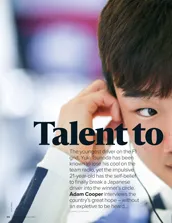Crucially, thanks to extra financial resources, the team has added in-house manufacturing capability over the past couple of years whereas previously, much had to be contracted out, which was a more efficient way of doing things when the team was counting every penny. Updates now come through the system faster than before.
“Obviously, everything in the development cycle takes a while to get to the track, and we’ve now got manufacturing capabilities that allow us to get to the track quicker.
“Some of the stuff we had [in Monaco] really shouldn’t have been on the car for a couple of races. But when you can make the bits quickly, and can turn them around quickly, that’s just adding a string to our bow, really.
“It was disappointing to be so far back at the start of the year. But we’re just trying to recover.
“Every time you get an update on the car, you’ve got to understand it and make sure you get the most out of it. It’s a relative game, you keep bringing bits, but you look up and down the pit lane, and everyone else is too! It’s all going to filter through.”
As McCullough noted earlier teams face an extra dilemma this year as they make the trade-off between developing the current car and ensuring that they start the 2022 season with a strong package for the new regulations.
“We’re soon going to get to the business end of having to crack on with next year’s car.”
In Aston’s case the extra firefighting required to address the floor issue hasn’t helped. However, the team hasn’t taken its eye off the bigger picture.
“There was always a plan, with the development phase between this year’s car and next year’s car. In the end it hasn’t actually changed too much. Yes, we’re further back. So it’s been really important to deliver the good sessions in the tunnel, and get the bits to the car quickly.
“But it’s such a massive, massive, massive regulation change next year, you have to put a lot of effort into that as well, because we don’t want to start next year poorly
“So overall, that’s a balance, [technical director] Andrew Green’s balance, mainly, working with the aero team. And it’s being re-evaluated on a weekly basis after sessions in the tunnel, between the two projects. We’re soon going to get to the business end of having to crack on with next year’s car.”
All of this is being conducted against a background of an increasing headcount. It’s not easy to manage rapid expansion in any business, and in F1, with no lull in the relentless quest for performance, it’s even harder.
“Throughout the entire company, we had a good look at where we need to grow to add a bit the value,” says McCullough. “You don’t just employ people, it’s where do we think we need to be stronger? I think as a team, that’s always been our strength, focusing on the bits that matter.
“Now the resource isn’t as much of a limitation, it’s about trying to ensure that we can consistently put strong cars out and fight further up the grid than we did at the start of this year.”





